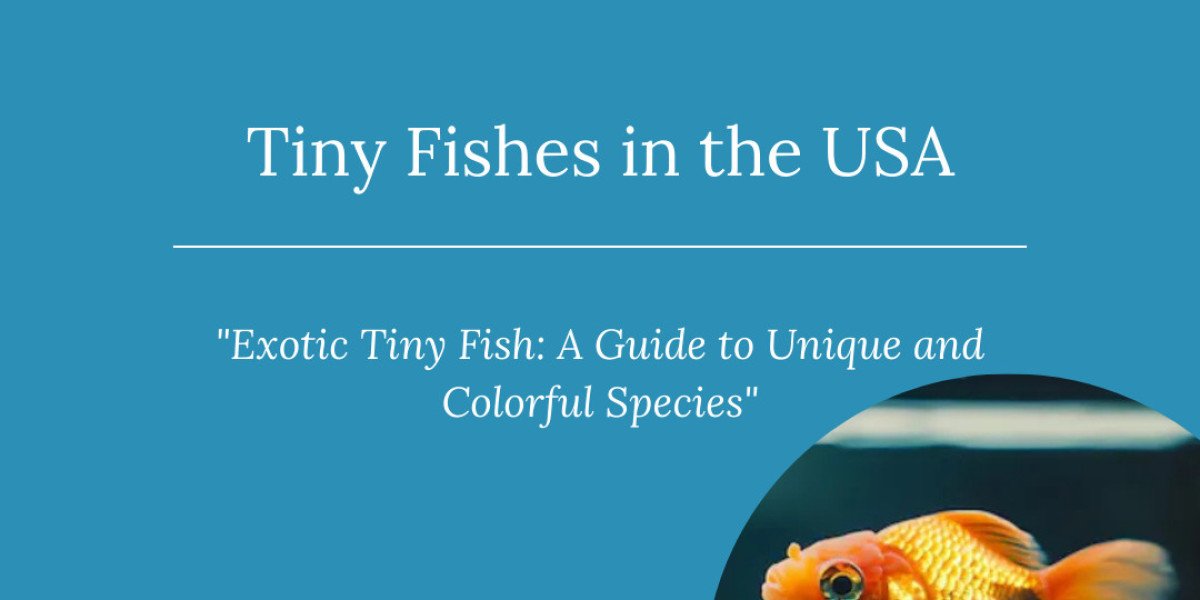Exploring Tiny Fishes Numbers of USA: America's Miniature Aquatic Wonders
Considering fishes found in the waters of USA leads most people to species like trout, catfish or largemouth bass. Yet below the surface of lakes, streams, and coastal waters, there exists a broad array of miniature fishes, many of which play key roles in an ecosystem's health. These tiny-yet-mighty fishes deserve attention for their unique adaptations, ecological relevance, and astonishing diversity. We're about to dive into the teeny-tiny fishes of the USA and explore their remarkable traits.
1. Least Killifish
The Least Killifish or Heterandria formosa (one of the smallest fishes in North America), can grow to only 1 inch (2.5 cm) in largest length. Surprisingly, the species, despite its name, belongs to a family of fish known as livebearers, with a tendency to live-bear their offspring, unlike most fishes that lay eggs. It inhabits slow-moving waters: swamps and ditches, dominant in the southeastern U.S. ecosystem.
2. Pygmy Sunfish
The pygmy sunfish family consists of diminutive, remarkably colored fishes that are originally from the southeastern USA. Rarely reaching lengths of more than 1.5 inches (3.8 cm), the shy fish inhabit densely vegetated waters where they feed primarily on small invertebrates. Their fascinating coloration and multiple patterns make them an attraction for fish enthusiasts.
3. Darter Fish
Darters form one of the most widespread groups of small freshwater fishes in North America. Some varieties, the smallest of the Etheostoma kinds, measure under two inches (5 cm). These brightly colored fishes are found in clear, fast-moving waters and were tagged as darters due to their quick, darting movements among rocks and gravel beds.
4. Mummichog
These are hardy creatures, making their homes along the Atlantic shores, and tolerate salinities from fresh to brackish to marine waters. In general, they do not grow larger than 2.5 inches (6.4 cm). These tough fish serve as an important link in estuarine food webs, being a food source for many predators.
5. Mosquitofish
Known for their appeal for mosquito larvae, Mosquitofish helps in the natural control of insect populations. Although these fishes typically have a body length of about 1.5 inches (3.8 cm), they have found their way into many water systems worldwide for similar purposes. Unfortunately, in some areas, their adaptability has led them to be invasive and lead to the decimation of native fishes.
6. Speckled Dace
Generally occurring in the western area of the USA, the speckled dace attains 2-3 inches (5-7.5 cm) in length. These fishes are adaptable. They inhabit a wide variety of spaces, ranging from mountain streams to creeks and desert rivers. This possibly makes them one of the most widespread among the small fishes in North America.
Importance of Small Fish
Although these fish are among the smallest aquatic animals in the aquatic environment, they are still very important in the ecosystem. Birds, large fishes, and other wild animals prey on those species to build food chains. Some, such as mosquitofish, control insect pests, while others, like darters, play the role of indicators of water quality and general ecosystem health.
Conservation and Protection Efforts
While most of the common small fish species are faced with threats due to habitat destruction, pollution, and climate change, several darters are extremely sensitive to water pollution and may go extinct. Additionally, restoration of habitat, pollution control, and captive breeding programs are some of the initiatives to keep off these unique species for our generations.
Conclusion
While small, these fishes are vitally important for their entire natural environments. Appreciating and understanding these fishes may offer an alternative view about the interlocking web of life throughout America's waterways. Regardless if you are a researcher, aquarium collector, or just a nature lover, having an interest in these tiny aquatic wonders will open a world of discovery and appreciation for the hidden wonders of freshwater and coastal habitats.








